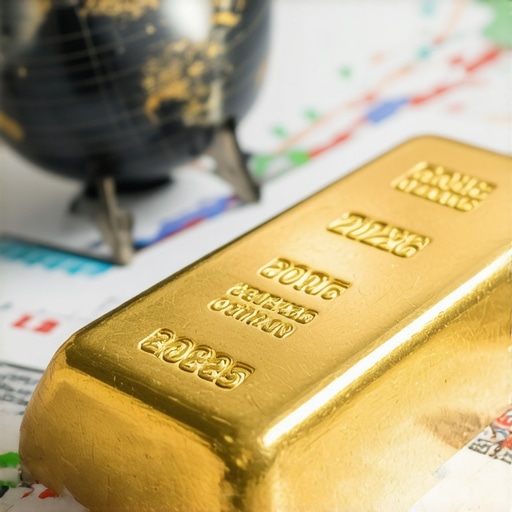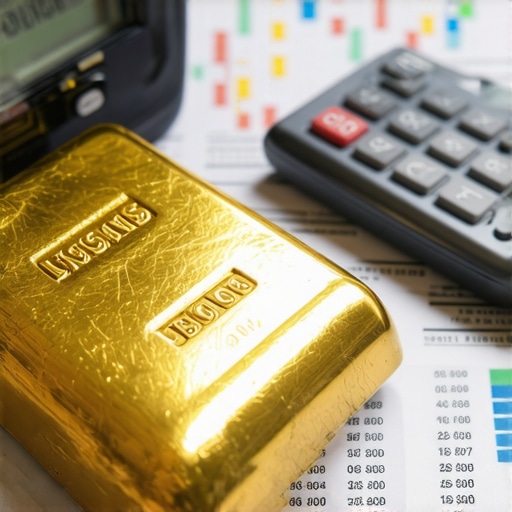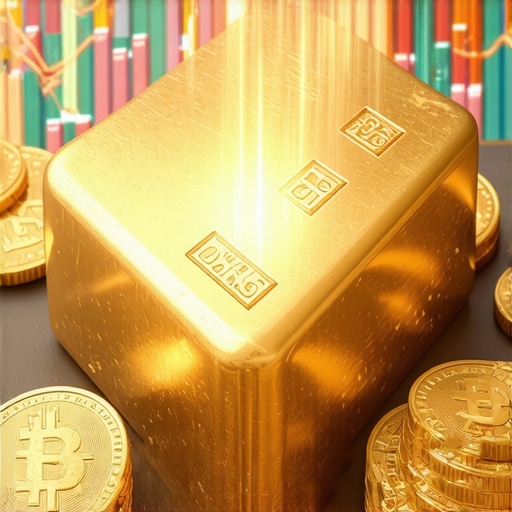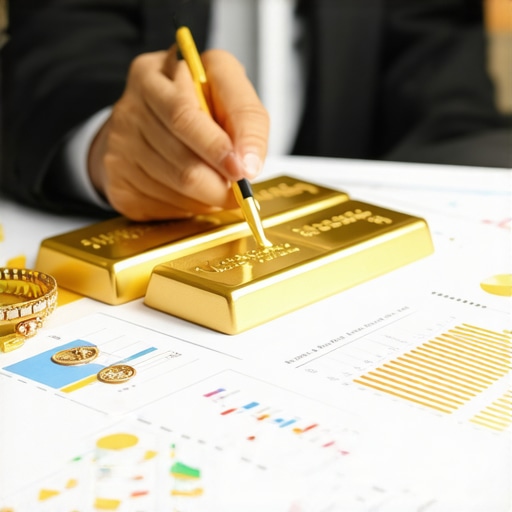Unraveling the Complex Dynamics of Gold Supply & Demand in 2025
As global economic uncertainties persist, understanding the nuanced interplay between gold supply and demand becomes paramount for sophisticated investors and industry experts. The year 2025 presents a unique landscape shaped by geopolitical shifts, technological advancements, and evolving monetary policies. This article delves into the advanced analytical frameworks necessary to interpret these market drivers and forecast future trends with confidence.
The Evolution of Gold Supply: From Mining to Market Integration
The supply side of gold is undergoing a transformative phase, influenced heavily by emerging mining technologies and geopolitical considerations. Notably, increased exploration efforts in politically stable regions are augmenting reserves, while geopolitical tensions, especially in key gold-producing countries, may disrupt traditional supply chains. Additionally, recycling and secondary market activities are gaining prominence, contributing to a more sustainable and decentralized supply model. For more on these trends, see this comprehensive analysis.
Demand Drivers in 2025: Beyond Investment and Jewelry
Demand for gold extends beyond conventional sectors, driven by technological innovation, central bank policies, and geopolitical risk mitigation strategies. The surge in gold-backed digital assets and blockchain integration has created new demand channels, while central banks continue to diversify their reserves amidst global monetary shifts. Meanwhile, jewelry demand remains resilient but is influenced by cultural trends and economic health indices. The intricate balance between these factors underscores the importance of analyzing demand elasticity and substitution effects within the market.
Expert Question: How Will Technological Innovations Reshape Gold Demand in 2025?
This query reflects ongoing debates among market analysts and industry insiders. The integration of blockchain and digital asset platforms may redefine gold’s role as a safe haven and a financial instrument. Moreover, advancements in mining and refining technologies could alter supply dynamics, impacting prices and investment strategies. To stay ahead, investors must monitor technological trends and their implications on market equilibrium.
Strategic Implications for Investors and Industry Stakeholders
For investors aiming to harness these insights, crafting a diversified gold portfolio that includes physical bullion, ETFs, and mining stocks can mitigate volatility. Developing a long-term gold investment plan that anticipates supply constraints and demand surges is essential. Resources such as this guide can assist in strategic planning.
Furthermore, engaging with expert content and industry reports enhances decision-making precision. As noted in a recent white paper by the World Gold Council, understanding supply-demand cycles is crucial for predicting price movements and optimizing entry/exit points.
Explore More: Deepen Your Expertise on Gold Market Trends
If you’re interested in mastering gold investment strategies for 2025, consider exploring our comprehensive resource. Your insights could contribute significantly to the collective knowledge pool, shaping smarter investment paradigms.
Harnessing Technology: The Future of Gold Demand in 2025
The landscape of gold demand is rapidly evolving, driven significantly by breakthroughs in technology and digital finance. As expert analysts forecast, innovations such as blockchain integration, tokenization, and advanced refining processes will redefine how investors and industries perceive gold’s value and utility in 2025. These developments are not merely incremental; they promise to transform traditional demand channels and introduce new dynamics to the market.
What Are the Key Technological Trends Expected to Impact Gold Demand in 2025?
One of the most notable trends is the rise of digital gold tokens—a fusion of blockchain technology with physical gold assets. This innovation allows investors to buy, sell, and transfer gold instantly and securely, broadening access to gold investment beyond physical ownership. According to a detailed analysis by market experts, the growth of digital gold could significantly boost demand, especially among younger investors seeking liquidity and ease of transactions.
Simultaneously, advancements in refining and extraction technologies are expected to lower costs and increase the supply of high-purity gold, further impacting prices and market stability. These technological strides are complemented by innovations in recycling methods, which are making secondary gold more competitive, sustainable, and accessible. As the World Gold Council emphasizes, understanding how these technological shifts influence supply and demand is essential for savvy investors aiming to develop resilient strategies (source).
The Strategic Role of Gold in a Tech-Driven Market
As digital assets proliferate, gold’s traditional role as a safe haven and store of value is being redefined. The integration of blockchain not only enhances transparency and security but also introduces new financial instruments such as gold-backed stablecoins and ETFs. These instruments attract a broader investor base, including institutions and retail investors, who may have previously considered gold primarily for wealth preservation.
Furthermore, technological innovations are enabling more precise tracking of supply chains and provenance, ensuring the authenticity and ethical sourcing of gold. This transparency aligns with growing consumer and investor preferences for sustainable and responsibly sourced assets, further influencing demand patterns.
How Can Investors Leverage Technological Trends to Maximize Gains?
Investors should consider diversifying their portfolios with exposure to innovative gold products like gold ETFs and digital tokens. Staying informed about technological advancements and regulatory developments is crucial to anticipate market shifts and capitalize on emerging opportunities. Developing a deep understanding of how technology influences supply and demand cycles can provide a strategic edge, especially in volatile markets.
For those seeking practical guidance, developing a long-term investment plan that integrates these technological insights can help mitigate risks associated with market fluctuations and geopolitical uncertainties. Resources such as this strategic guide serve as invaluable tools for building a resilient investment portfolio in 2025 and beyond.
If you’re eager to deepen your expertise on how these trends will influence gold prices and market dynamics, I invite you to share your thoughts below or explore our detailed analysis on market forecasts and expert predictions.
Harnessing Blockchain and AI: The Next Frontier in Gold Market Dynamics
As we delve deeper into 2025, the convergence of blockchain technology, artificial intelligence, and gold trading is redefining traditional paradigms. These innovations are not merely incremental; they are catalysts for a fundamental transformation in how gold is perceived, traded, and integrated into modern financial systems. For investors, understanding these shifts is critical to maintaining a competitive edge and safeguarding assets in an increasingly digital economy.
What is the Impact of Blockchain-Enabled Asset Tokenization on Gold Liquidity?
Tokenization—transforming physical gold into digital tokens on a blockchain—offers unparalleled liquidity and fractional ownership capabilities. According to a comprehensive report by the World Gold Council, this process reduces transaction costs, enhances transparency, and democratizes access to gold investments. As a result, a broader spectrum of investors, including retail participants, can diversify portfolios more efficiently, thus elevating demand and price stability.
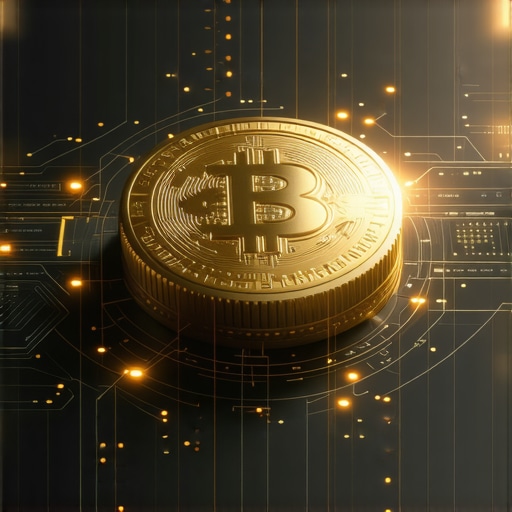
Advanced Predictive Analytics: Navigating Market Volatility with AI
Artificial intelligence-driven predictive analytics now enable market analysts to model complex supply-demand interactions with unprecedented accuracy. Machine learning algorithms analyze vast datasets—ranging from geopolitical events to macroeconomic indicators—to forecast price movements and identify optimal entry/exit points. This technological leap is instrumental for institutional investors seeking to hedge against market turbulence and capitalize on emerging trends.
How Can Deep Learning Improve Gold Price Forecasting Models?
Deep learning models, such as neural networks, can incorporate nonlinear relationships and adapt to new data streams in real-time, offering more nuanced and reliable forecasts. Unlike traditional econometric models, these systems can detect subtle market signals and anomalies, providing investors with actionable insights. As noted by Stanford University’s recent research, integrating deep learning into trading algorithms significantly enhances predictive accuracy, especially in volatile markets like gold.
If you wish to explore these technological advancements further, consider subscribing to in-depth industry reports or engaging with expert webinars hosted by leading financial institutions.
Integrating Technology-Driven Insights into Strategic Portfolio Management
Developing a resilient gold investment portfolio in 2025 demands a proactive approach that integrates technological insights. Diversification should extend beyond physical bullion and ETFs to include digital assets, AI-informed trading strategies, and blockchain-based securities. Moreover, continuous monitoring of technological developments and regulatory landscapes is vital for adapting strategies accordingly.
For instance, leveraging AI-powered robo-advisors tailored for precious metals can optimize asset allocation dynamically, based on real-time market data and predictive analytics. Such tools empower investors to respond swiftly to market shifts and mitigate risks associated with geopolitical or macroeconomic shocks.
What Are the Best Resources for Staying Updated on Gold Market Innovation?
To stay at the forefront of technological trends impacting gold, subscribe to industry-leading publications such as the World Gold Council’s research portal or participate in specialized conferences and webinars. Engaging with these resources ensures you remain informed about regulatory changes, technological breakthroughs, and market forecasts, ultimately enhancing your strategic decision-making.
Embracing technological innovation is no longer optional but essential for sophisticated investors aiming to navigate the complexities of the gold market in 2025 and beyond. Dive deeper into these topics and share your insights below—collective knowledge accelerates innovation and strategic success.
Unlocking the Future of Gold: A Deep Dive into Supply Chain Innovations and Market Drivers
In 2025, the gold market stands at a pivotal crossroads, influenced by groundbreaking technological advancements and shifting geopolitical landscapes. Industry insiders and investors who grasp these complex dynamics can better position themselves for sustainable growth and resilience. This article explores the latest developments shaping gold’s supply chain, demand evolution, and the strategic opportunities emerging from these changes.
Revolutionizing Gold Supply: From Traditional Mines to Circular Economies
The traditional gold supply chain is rapidly transforming through the integration of advanced extraction technologies, such as in-situ leaching and automation, which reduce environmental footprints and operational costs. Moreover, secondary supply sources—namely, recycling and refurbishment—are gaining prominence, emphasizing sustainability and ethical sourcing. According to a detailed report by the World Gold Council, these innovations are crucial in balancing supply constraints and market demand fluctuations.
How Will Technological Innovations Reshape Gold Demand in 2025?
Technological progress, especially in blockchain, tokenization, and AI, is redefining gold’s role as both a physical asset and a digital financial instrument. The rise of digital gold tokens facilitates fractional ownership, enhances liquidity, and broadens access for retail and institutional investors alike. Furthermore, AI-driven analytics enable nuanced market forecasting, allowing investors to navigate volatility more effectively. As per Stanford University’s recent findings, these technologies significantly enhance market transparency and predictive accuracy, making them indispensable tools for strategic decision-making.
Expert Question: How Can Gold Investors Leverage Blockchain for Market Advantages?
This pressing query addresses the transformative potential of blockchain-enabled asset tokenization. By converting physical gold into digital tokens, investors gain unparalleled liquidity, fractional trading capabilities, and transparency in provenance. The World Gold Council highlights that tokenization democratizes access to gold markets, reduces transaction costs, and fosters innovation in asset management. Embracing this shift allows investors to diversify portfolios dynamically and hedge against traditional market risks.
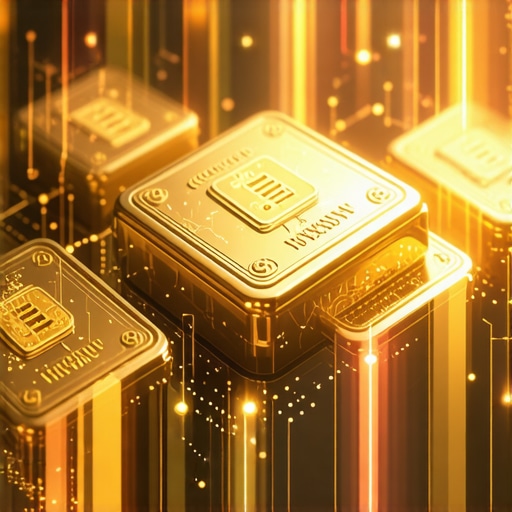
Strategic Portfolio Management: Integrating Cutting-Edge Technologies
To capitalize on these technological trends, investors should craft diversified portfolios that include physical gold, ETFs, blockchain-based securities, and AI-enhanced trading algorithms. Continuous education through expert-led webinars and industry reports ensures staying ahead of regulatory changes and technological breakthroughs. Resources such as this comprehensive guide are invaluable for developing resilient, future-proof investment strategies.
The Convergence of AI, Blockchain, and Gold: A Paradigm Shift
The integration of AI, blockchain, and big data analytics is fostering a new era of transparency, efficiency, and market intelligence. For example, AI-powered algorithms now scrutinize geopolitical risks, macroeconomic indicators, and market sentiment to generate real-time forecasts with unprecedented precision. These technological tools enable investors to identify emerging trends, optimize entry and exit points, and mitigate risks associated with geopolitical upheavals and macroeconomic shocks.
How Will Deep Learning Improve Gold Price Forecasting Models?
Deep learning models, especially neural networks, excel at capturing nonlinear relationships and adapting swiftly to new data. Stanford’s recent research underscores that these models significantly outperform traditional econometric techniques, particularly in volatile markets like gold. They can process multidimensional datasets—such as social media sentiment, currency fluctuations, and geopolitical events—to produce more reliable forecasts, giving investors a strategic advantage in market timing and risk management.
If you’re eager to deepen your understanding of technological impacts on gold markets, consider subscribing to specialized industry analyses and participating in expert webinars. Sharing insights and engaging with a community of informed investors can further refine your strategic approach.
The Future of Gold: A Digital and Technologically-Driven Market Landscape
As we move further into 2025, the adoption of blockchain, AI, and IoT technologies will continue to redefine gold’s role within the global financial ecosystem. Investors and industry stakeholders who proactively adapt to these innovations will be better equipped to capitalize on emerging opportunities and mitigate risks associated with traditional market constraints. Staying informed through authoritative sources and leveraging cutting-edge tools will be vital for sustained success in this evolving landscape.
Expert Insights & Advanced Considerations
1. The Role of Digital Asset Integration in Gold Markets
Market experts emphasize that blockchain-based gold tokens will revolutionize liquidity and fractional investing, making gold more accessible and tradable in real-time, which could significantly influence demand patterns in 2025.
2. Sustainability and Ethical Sourcing as Market Differentiators
Increasing consumer and institutional preferences for ethically sourced gold will drive supply chain transparency initiatives, promoting recycling and responsible mining practices that impact market dynamics.
3. Technological Innovation as a Catalyst for Supply Expansion
Advances in refining, extraction, and recycling technologies will lower costs and increase high-purity gold availability, shaping supply-side strategies and market stability.
4. Central Bank Digital Gold Reserves
As central banks explore digital gold reserves, their strategic purchases could alter supply-demand balances, influencing market liquidity and price stability.
5. Integration of AI and Predictive Analytics in Market Forecasting
Deep learning and AI-driven analytics will enhance market forecasting accuracy, enabling investors to navigate volatility with greater precision and strategic agility.
Curated Expert Resources
- World Gold Council Research Portal: Essential for comprehensive industry reports and technological advancements in gold.
- Stanford University Finance & AI Research: Offers cutting-edge insights into deep learning applications for market prediction accuracy.
- Blockchain & Digital Asset Conferences: Key for understanding regulatory developments and innovations in gold tokenization.
- Industry White Papers on Sustainable Gold Supply: Critical for understanding trends in recycling and ethical sourcing.
- Financial News & Analysis Platforms (e.g., Bloomberg, Reuters): Provide real-time updates on market shifts and policy impacts.
Final Expert Perspective
In the rapidly evolving landscape of gold supply & demand in 2025, technological innovation, digital integration, and sustainability will be paramount. Strategic investors must leverage deep market insights and authoritative resources to maintain a competitive edge. Engaging with these advanced perspectives and resources not only enhances your understanding but also positions you to capitalize on emerging opportunities in this dynamic market. To deepen your expertise, consider exploring comprehensive guides on gold investment strategies and stay active within expert communities that shape the future of gold investing.






